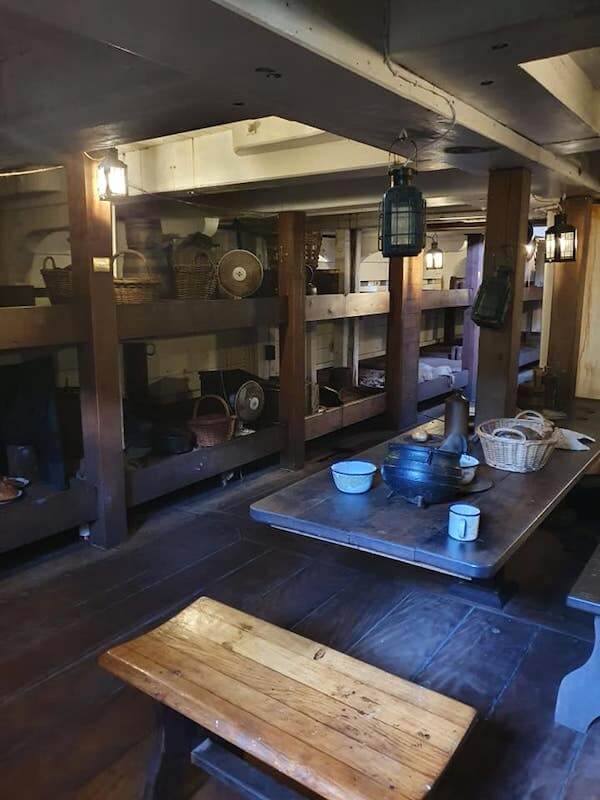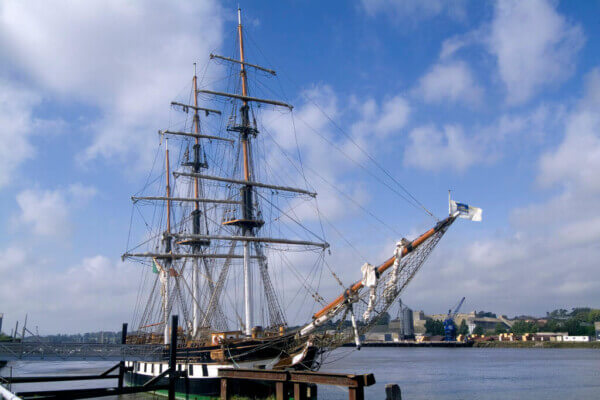The Dunbrody Famine Ship Experience, a popular tourist attraction in New Ross, County Wexford, received an award of merit at the 2020 CIE International Awards of Excellence.
This news item and page contain affiliate links and I may earn compensation when you click on the links at no additional cost to you.

It was one of 71 tourist attractions and hotels to receive the Merit Award of Excellence.
The awards are judged on feedback from visitors who take CIE tours throughout the year.
There were no awards this year due to the pandemic.
Visiting the Dunbrody Famine Ship is as close to the actual experience of getting on a famine ship as you’ll get.

The History of The Dunbrody Famine Ship
The ship was built in Quebec and launched in 1845 shortly before Ireland’s potato crop failed.
During the Famine years, there was a high demand for vessels and so the ship’s owners, the Graves family, who owned seven other similar vessels, had no shortage of passengers to fill that need.

At the height of the Famine, the ship transported between 160 and 300 people across the North Atlantic.
It traveled mostly to Quebec but also to New York.
Imagine yourself walking toward the New Ross quay in 1849 and approaching the William Graves & Son ticket office.
Visual presentations at the Dunbrody Famine Ship help set the scene for what Ireland was like during the period of the Great Famine as the country sank deeper and deeper into despair.
Part of the audio-visual experience includes the voices of emigrants disagreeing about what to pack for the long journey, while another reads aloud a letter from his brother in Detroit.

Once onboard the Dunbrody, you’ll get a sense of what a “coffin ship” was like for the millions of emigrants who took them to the New World.
Most journeys to North America on coffin ships were about six weeks long, with passengers living in dire conditions.
Most barely saw daylight, except for about an hour each day when in small groups they were allowed to cook on an open stove on deck.
The conditions weren’t clean, either. Buckets served as toilets and passengers used seawater to wash.
As a result, cholera and typhoid were common and accounted for many deaths.
Research your Irish Ancestors on Ancestry.com

Not a single person, however, died on the Dunbrody. This is something that is largely credited to its skipper, Captain John Williams.
Part of the Dunbrody Famine Ship Experience, which is about a 1 1/2-hour drive from Dublin, includes a look at a recreated Arrivals Hall, similar to what the newly arrived immigrants would have seen as they arrived in North America.
The center also celebrates the millions of successful Irish-Americans who were descendants of those early newcomers.
In the Irish America Hall of Fame, you’ll see an exhibition of photos and other information relating to some of Irish America’s most famous sons and daughters.

They include Henry Ford, President John F. Kennedy, Grace Kelly, Maureen O’Hara, Eugene O’Neill, and many others.
The famine ship is open seven days a week from 9 a.m. to 6 p.m.
Admission is €14 for adults, €13 for seniors, €9 for students and children, with kids under 4 admitted free of charge. Other ticket prices can be found on the website.

